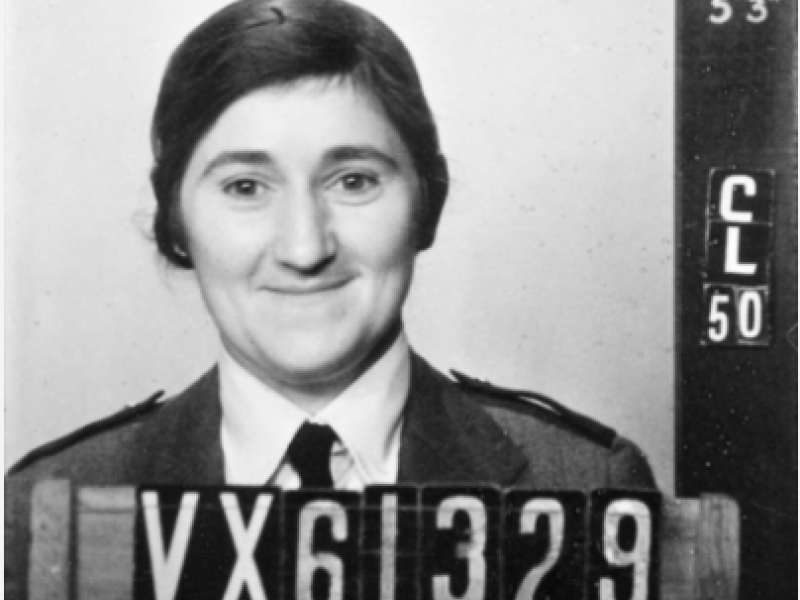Sister Rosetta Joan Wight, Australian Army Nursing Service
Rosetta Wight was born on 3 December 1908. Her parents, Leslie Rivers and Rosetta Frances Wight, lived on their farm “Carlisle” at Fish Creek, in Victoria.
Wight trained as a nurse at Bendigo Hospital, and passed her exams in 1935. She later worked at Statenboro Private Hospital in Toorak, Victoria.
Wight first enlisted in the Australian Army Nursing Service on 14 January 1941, at the age of 32. She served for some months in Australia as a senior nurse, until 8 August when she was taken on with the 107th Australian General Hospital and readied for overseas service.
Later that month she embarked for Singapore aboard HMAS Wanganella, arriving in mid-September. She was attached to the 13th and 10th Australian General Hospitals, tending the wounded in Singapore and Malaya.
In late 1941, Japanese forces attacked Pearl Harbor and began an assault on northern Malaya, moving south toward Singapore. Even as the fall of Singapore seemed inevitable, there was a strong sense among the Australian nurses that they should stay with their patients, in accordance with their oath of service and duty to the wounded. However, they were ordered to evacuate, and Wight was one of 65 Australian nurses who left Singapore aboard the Vyner Brooke on 12 February 1942.
Two days later the ship was bombed by the Japanese. Wight had been in the saloon with a fellow nurse when the bombs hit, and she sustained deep shrapnel wounds to the backs of her thighs – so deep they hit bone. The two were treated and half-carried to the deck to be assisted into life boats.
Those who could swim made for the nearby Banka Island. Wight’s raft made it to Radji Beach along with 21 Australian nurses and some 80 other survivors. Wight was unable to walk and was thought to have sustained nerve damage. Some of the civilians travelled to the nearest port to surrender to the Japanese, while the nurses remained on the beach to tend the wounded.
On the morning of 16 February a group of Japanese soldiers arrived. The wounded men who were capable of walking were ordered to march around a headland, where they were shot and killed.
Back on the beach, the nurses were ordered to walk into the sea, shoulder-to-shoulder. Wight was among the severely wounded and had to be supported on either side by her sisters. When the water reached their waists, the Japanese opened fire with machine-guns. Of the 22 Australian nurses ordered into the sea, all but one were killed, including Rosetta Wight. She was 33 years old.

 Australian War Memorial
Australian War Memorial